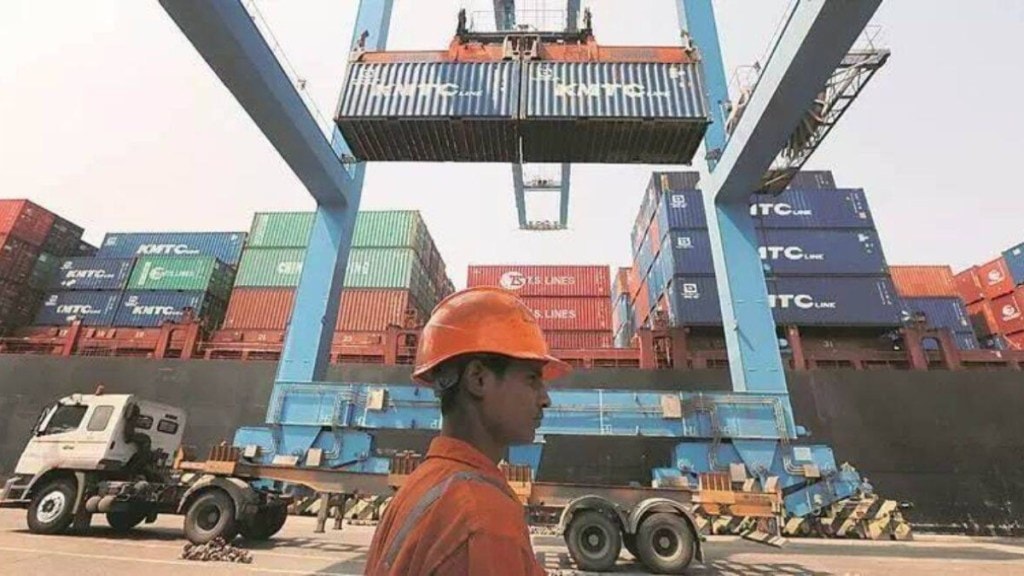By Biswajit Dhar
The previous fiscal year offered plenty to cheer when it came to India’s exports front as the $400-billion level was breached for the first time. It was an occasion to cheer more enthusiastically because exports had virtually stagnated after crossing the $300 billion threshold in FY12 and was able to go only up to $330 billion in FY19. In the interregnum, all efforts to spur export growth had ended in abject failure. These included the three free trade agreements (FTAs) that India had concluded with its East Asian partners, namely, the ASEAN members, Republic of Korea, and Japan. Each of these FTAs failed to deliver as Indian businesses failed to leverage the market opening India had negotiated with its partner countries.
The record level of exports at $422 billion in FY22 had two feel-good factors. First, foreign demand provided a cushion for the Indian economy when domestic demand was unable to overcome the adverse impact of the pandemic-induced downturn. Second, there were heightened expectations that this momentum in export growth would be maintained, and that the $500 billion threshold would be breached in FY23. There was a strong basis for this optimism since export growth during the first quarter was almost 25% as compared to the corresponding period in the previous year.
However, from the second quarter of FY23, export growth showed a perceptible slowdown. Between July 2022 and January 2023, exports had increased by a mere 1.7%, and from the third quarter, export growth had turned negative. Thus, while exports have grown by 8.5% during the 11 months of the current fiscal year, the decline registered in recent months should ring alarm bells.
India’s largest export destination, namely, the United States (US), which accounted for nearly 18% of the total exports in the first nine months of the current financial year, registered a fall in exports by over 3% from the second quarter. In the third quarter, the decline was steeper, at nearly 8%. There is a need to consider these numbers carefully since they do not bode well for India’s export prospects in 2023, if the growth projections for the US economy are to be believed.
In the two quarters in which exports to the United States had declined, the world’s largest economy was growing at an average of 3%, well above its average growth rate for the previous decade. However, according to recent forecasts, the US economy is expected to register perceptible slowdown as the impact of the Federal Reserve’s rate hikes to counter inflation is felt. In 2023, the US economy is expected to remain flat and should grow at a mere 1.6% in 2024. This implies that India’s exports, which had hugely benefited from an expanding US economy post-Covid, are expected to face serious headwinds during the next financial year.
Exports to the United Arab Emirates (UAE) and the Netherlands, the two major destinations after the US, show contrasting trends. While exports to the UAE, India’s new FTA partner, mirrored the overall trend of progressive slowdown in growth over the three quarters, the Netherlands consolidated its position as India’s third-largest market, backed by steep increase in imports of petroleum products following the imposition of Russian sanctions. In fact, several members of the European Union (EU), most significantly, France, have stepped up their imports from India in the recent past.
This should be viewed as an encouraging sign as India is currently negotiating an FTA with the EU, and the two governments are eyeing to close the deal by the end of the year.
FY22 had seen India’s exports to China reach a record level, $21.3 billion, thus carrying the growth momentum from the immediately preceding year. It had appeared then that India’s exports to China, which had stagnated since FY14, would continue to expand. Contrary to these expectations, India’s exports to China declined by a staggering 36% during the first three quarters of this fiscal year. The Covid-induced disruption that the Chinese economy had seen during most of 2022 would be the obvious explanation for this decline. However, data from China Customs (GACC) shows that despite the economic disruption, China’s imports in 2022 were 1% higher than the record level of $2.7 trillion achieved a year earlier. It may be pointed out that during April-December 2021, India’s exports reached $17.1 billion, but a year later, they have collapsed, even when China’s imports increased, albeit marginally. The factors responsible for this squeeze in India’s exports to China need to be identified, and remedial steps needs to be taken, especially because an expanding Chinese economy in 2023 should provide plenty of opportunities to Indian businesses.
Petroleum products have been the mainstay of India’s exports, having expanded by 55% during April-January 2022-23, taking their share in the total to nearly 22%.
Electronic goods have been the other fast-growing sector, with smartphones providing the growth momentum. In the current fiscal, India had exported smartphones valued at over $7 billion, or 2% of total exports. This is the only silver lining in what has otherwise been a dismal situation.
One feature of India’s exports during 2022-23 has been that commodity-dependent sectors, especially petroleum, have benefited from the hardening of prices in the global markets. These sectors will be particularly vulnerable when the anticipated downturn in the global economy sets in.
The government would have to give careful consideration to the export sector, including in the forthcoming Foreign Trade Policy, to ensure that export slowdown does not have serious implications for the current account deficit.
(Former professor, Centre for Economic Studies and Planning, School of Social Sciences, JNU)

